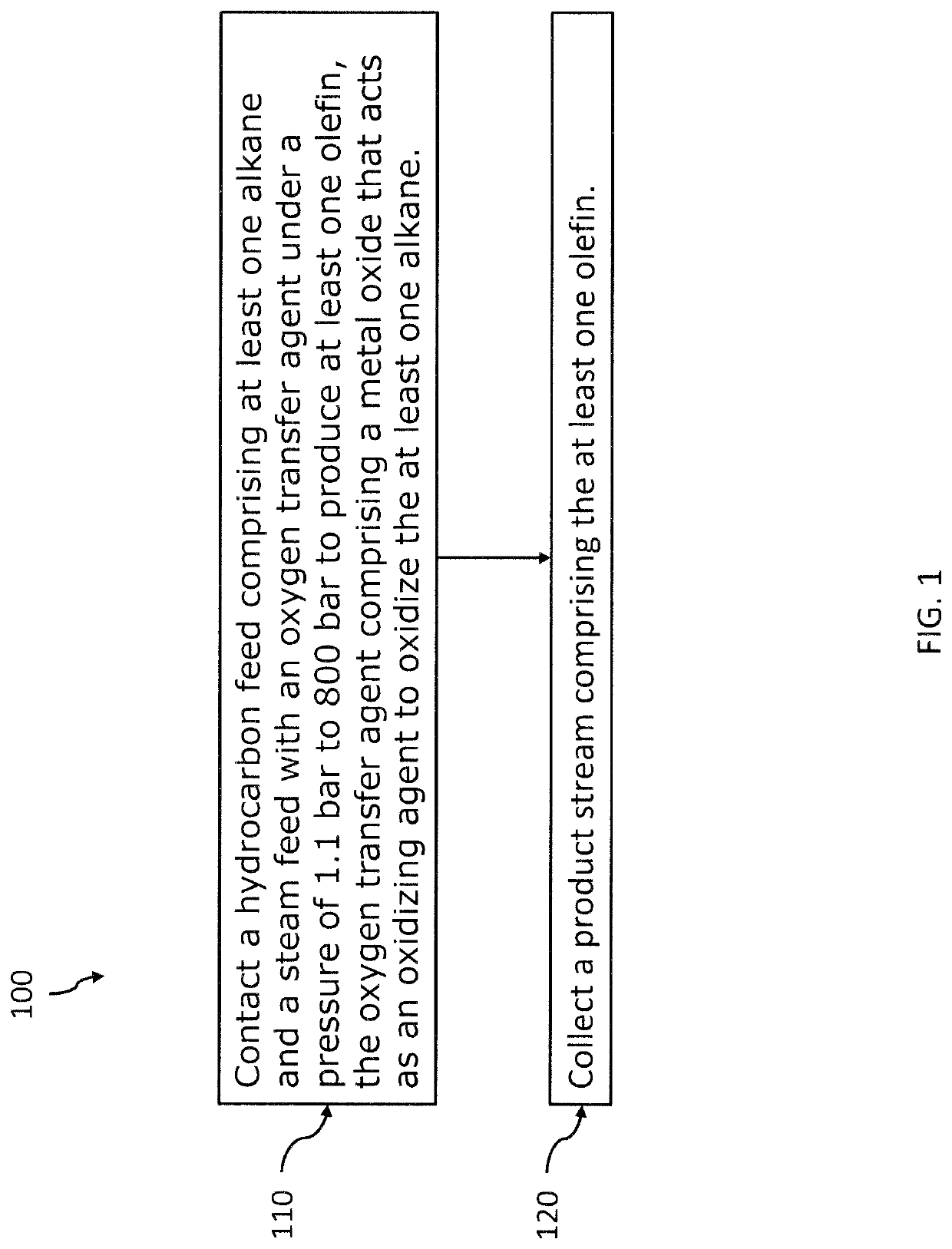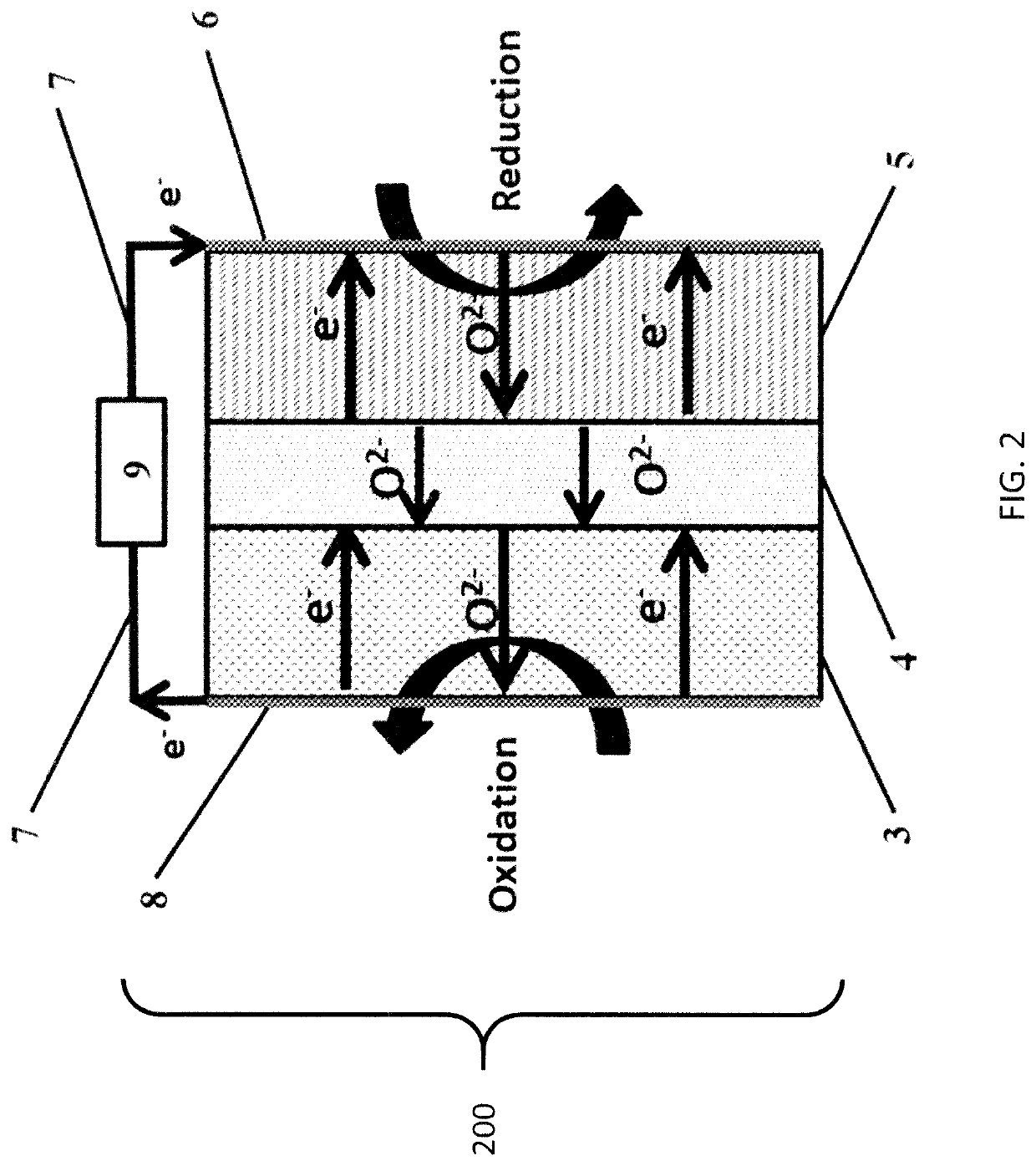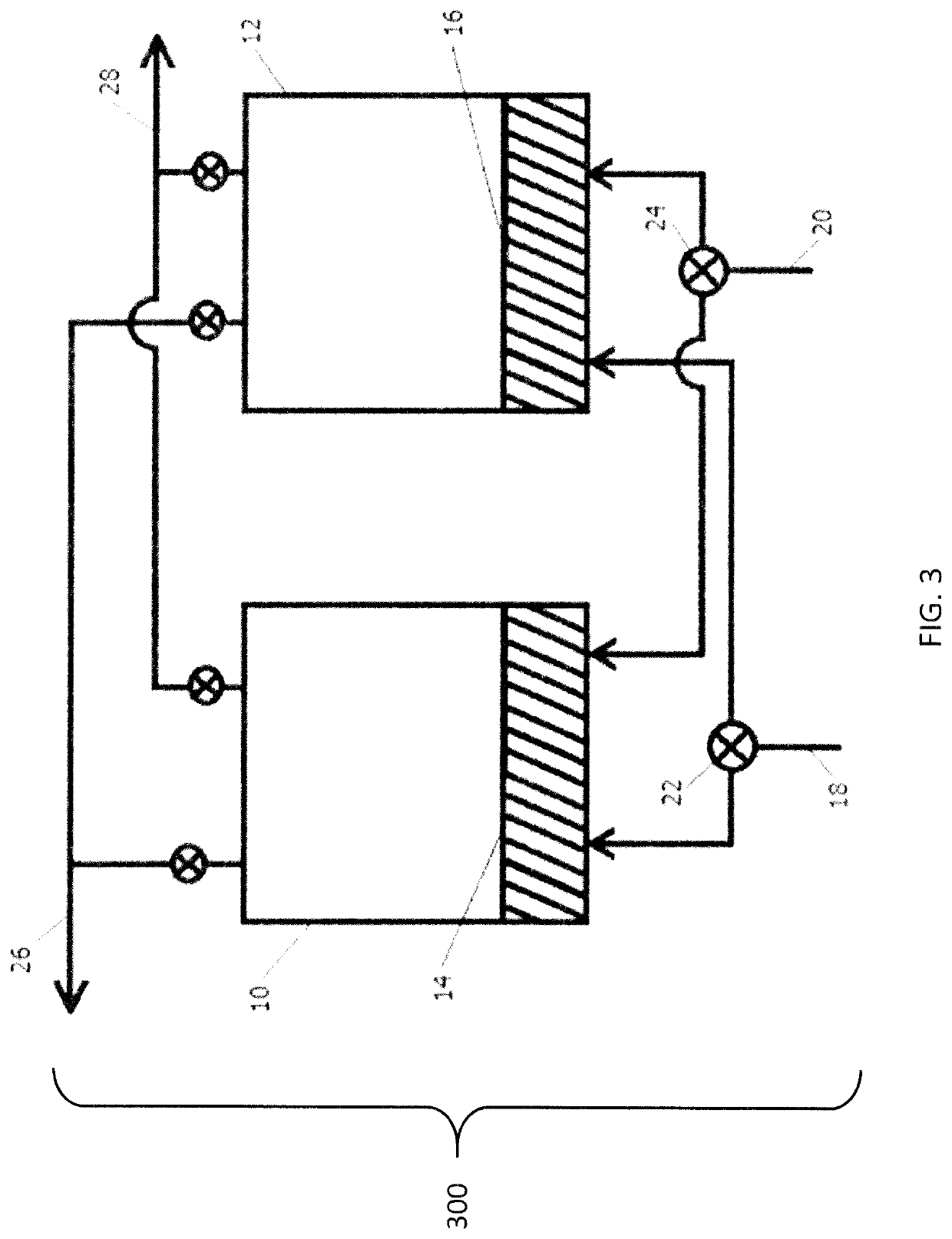Methods and systems for oxidative dehydrogenation of hydrocarbons to olefins
a technology of olefins and hydrocarbons, applied in chemical/physical/physical-chemical processes, chemical apparatus and processes, organic chemistry, etc., can solve the problems of high energy consumption, high environmental and cost challenges to bring on this level of new capacity, and projects located in severe epa non-attainment zones are challenged by the increase of no/sub>x /sub>control costs
- Summary
- Abstract
- Description
- Claims
- Application Information
AI Technical Summary
Benefits of technology
Problems solved by technology
Method used
Image
Examples
example 1
[0069]A 10 ml sample of a spray-dried oxygen transfer agent formed of lithium, boron, manganese oxides, magnesia oxides and other binders was charged to a ¾ inch inner diameter alumina reactor and fed from bottom to top as a fluid bed. The oxidative dehydrogenation of a hydrocarbon feed was conducted at a temperature of 825° C. to 840° C. at a gas hourly space velocity (“GHSV”) of 2,400-4,800 hr−1. Ethane was employed as the hydrocarbon feed and the product included ethylene, propylene, butylenes, C5+ olefins, and aromatic compounds. The ethane cycle lasted for 15 seconds followed by 2 minutes of nitrogen, 10 minutes of air, 2 minutes of nitrogen after which another ethane charge was made. The results of these experimental runs over 165 cycles are shown in FIG. 5. The first 149 cycles did not include a steam feed. The final 16 cycles included a one to one mole ratio of steam (via a water injection system) to ethane as the feed to the fluid bed reactor. FIG. 5 illustrates that the ad...
example 2
[0070]In this example, pressure was applied during the oxidative dehydrogenation of an ethane feed for the production of an olefin stream. Table 1, provided below, demonstrates the significant increase in the rate of conversion due to an increase in the pressure applied during oxidative dehydrogenation of the ethane feed stream. In each experimental run, the oxygen transfer agent was a mixed ionic electronic conducting material containing a metal oxide comprised of Li, Mn, B, Mg and O and the temperature was held at 840° C.
[0071]
TABLE 1Effect of Pressure on RateAbsoluteRatePressure%mol-C2 / psia.GHSV, hr−1C2 Conversion% C2+ Selectivityg-cat.-sec.154,80085850.00005115100,50030950.00037
[0072]As shown in above, the conversion rate increased by a factor of 7.44 while the pressure increased by a factor of 7.66, suggesting that the reaction of the oxygen transfer agent with hydrogen is a first order reaction in hydrogen. Surprisingly, the selectivity to the desired product, ethylene and oth...
example 3
[0075]In this prophetic example, an oxygen transfer agent is prepared by ball milling manganese dioxide (32.2 grams), boric acid (11.3 grams), magnesia (42.3 grams) and lithium hydroxide (4.5 grams) with water. The milled mixture is calcined in air at 900° C. for 8 hours. A sample (e.g., 5 ml) of the oxygen transfer agent is charged to a ½ inch inner diameter alumina reactor. Oxidative dehydrogenation conversions are simulated at 840° C. at GHSVs of 4,800 hr−1 based on the dry ethane feed. Ethane may be used to produce the ethylene-containing product, which would also include propylene, butylenes, C5+ olefins, and aromatic compounds. The sum of these products define the C2+ selectivity. The ethane cycle is simulated as running for 15 seconds followed by 2 minutes of nitrogen, 10 minutes of air, 2 minutes of nitrogen after which another ethane charge is made. The results of the simulated runs are projected in Table 2, shown below.
[0076]
TABLE 2Effect of Pressure and Steam on Oxidative...
PUM
| Property | Measurement | Unit |
|---|---|---|
| temperature | aaaaa | aaaaa |
| pressure | aaaaa | aaaaa |
| temperature | aaaaa | aaaaa |
Abstract
Description
Claims
Application Information
 Login to View More
Login to View More - R&D
- Intellectual Property
- Life Sciences
- Materials
- Tech Scout
- Unparalleled Data Quality
- Higher Quality Content
- 60% Fewer Hallucinations
Browse by: Latest US Patents, China's latest patents, Technical Efficacy Thesaurus, Application Domain, Technology Topic, Popular Technical Reports.
© 2025 PatSnap. All rights reserved.Legal|Privacy policy|Modern Slavery Act Transparency Statement|Sitemap|About US| Contact US: help@patsnap.com



